COTS

COTS (Commercial Off-The-Shelf – “ready for use”) – Technology means that a special approach is used to build special purpose systems, according to which industrial computing modules are used, and racks, racks, switching units and cables are made in a special design and provide the required operating conditions (for example, resistance to climate cal, vibrational, acoustic, etc. influences). COTS technology uses ready-made hardware and software technologies of an open type, previously widely approved and / or standardized on the market for general industrial civil applications.
Historically, the concept of COTS has emerged as an initiative of the US Department of Defense and defense departments in a number of other Western countries that want to cut their costs by reducing the share of costly unique solutions and technologies. For Russian developers, at present, in the context of the growing economic situation and the imposition of sanctions blocking access to the elemental base of defense and dual-use, this method of saving funds for the creation of equipment with high technical characteristics is especially relevant.
The general trend of constructing systems based on standardized COTS components penetrated into the space industry. This was facilitated by the extremely rapid pace of space exploration, the increasing complexity of the tasks to be accomplished, the requirements for shortening the development and modernization of systems, increasing their speed and reliability. Currently, the space is always present a large number of manned and unmanned aerial vehicles of different countries. This industry has evolved into a powerful industry related to research, the production of new materials, defense and other pressing problems.
How does radiation affect microcircuits
In “particle pieces”, cosmic radiation consists of 90% of the protons (ie, Hydrogen ions), 7% of the helium nuclei (alpha particles), ~ 1% heavier atoms, and ~ 1% electrons. Well, the stars (including the sun), the nuclei of galaxies, the milky way – abundantly illuminate everything not only by visible light, but also by X-ray and gamma radiation. During outbreaks in the sun – radiation from the sun increases by 1000-1’000’000 times, which can be a serious problem (for both future people and current spacecraft outside the earth’s magnetosphere).
Around the earth there are 2 belts of charged particles – the so-called Van Allen radiation belts: at an altitude of ~ 4000 km from protons, and at an altitude of ~ 17,000 km from electrons. Particles there are moving along closed orbits, captured by the magnetic field of the earth. Also there is a Brazilian magnetic anomaly – where the inner radiation belt closes closer to the ground, to an altitude of 200 km.
When gamma and X-ray radiation (including secondary, obtained due to the collision of electrons with the body of the apparatus) passes through the microcircuit – in the gate insulator of transistors, the charge gradually accumulates, and accordingly the parameters of transistors change slowly – the threshold voltage transistors and leakage current. An ordinary civil digital microcircuit after 5000 rad can stop working normally (though a person can stop working after 500-1000 rad)
In a low orbit 300-500km (where people fly), the annual dose can Be 100 rad and less, respectively, even for 10 years, the dialed dose will be carried by civilian microcircuits. But in high orbits> 1000km, the annual dose can be 10’000-20’000 rad, and conventional microcircuits will gain a lethal dose in a few months.
The biggest problem of space electronics is the collision with heavy charged particles (TLC) – protons, alpha particles and ions of high energies. TZCH have such a high energy that they “punch” the chip through (together with the satellite’s body), and leave behind a “loop” of charge. At best, this can lead to a program error (0 become 1 or vice versa), at worst – lead to a thyristor snapping. At the latched chip the power is short-circuited to the ground, the current can go very large, and lead to the combustion of the chip. If the power is disconnected and connected before combustion, then everything will work as usual.
The heavy charged particles of the outer space, acting on integrated microcircuits (ICs), can cause distortion of individual bits of data or program. The intensity of malfunctions depends on the type of memory used, the orbital parameters and the activity of the Sun.
There are several ways to combat snapping:
1) Monitor the current consumed and quickly juggle food.
2) Use chips on a sapphire substrate (Silicon-on-sapphire, SOS, in a more general form Silicon-on-insulator, SOI) – this eliminates the formation of bipolar parasitic transistors and accordingly snapping. Software errors nevertheless still can be. Silicon-on-sapphire plates are expensive, they are difficult to process, and they have limited application in the civilian sector – accordingly production is expensive.
3) Use the so-called triple-well process – it also greatly reduces the possibility of snapping the chip by additional isolation of the transistors by a pn junction, but does not require any special plates or equipment, and accordingly the production itself is much cheaper than silicon on sapphire.
Historically, in the USSR and Russia, more worked with silicon on sapphire, and in the west – try to use as much as possible conventional silicon with triple-well (to combine with commercial products and reduce costs), but also SOS / SOI too t necessary.
In the case when the distortion of the contents of the memory or the logic has worked incorrectly because of LF in spacecraft. To struggle with this remains only architectural methods, for example:
– majoritarian logic (when we connect 3 copies of each block we need at some distance from each other – then 2 correct answers “overpower” one wrong, using more persistent ones To the errors of memory cells (out of 10 transistors, instead of the usual 6),
– the use of error correction codes in memory, cache and registers.
But it is impossible to get rid of errors completely, (or rather a fan secondary particles) Will go exactly along the chip, and almost 5% of the chip can work with an error.This requires a highly reliable system of several independent computers and their correct programming.
As a result, the use of civilian microcircuits in space is limited by the snapping effect, And maybe at best in low orbits. “In high orbits and in outer space, special radiation-resistant chips are needed, because There we are deprived of the protection of the earth’s magnetic field, and the lead meter [2] will not save the high-energy particles of cosmic radiation. The fields of application of COTS technology should be clearly delineated, their misuse can lead to negative results.
Examples of the use of COTS-technologies in space
Acknowledgment of the use of COTS technologies and industrial ECB in space is the growing popularity of satellites made according to the CubeSat standard.
Kubsat, CubeSat – the format of small (super-small) artificial Earth satellites for space exploration, having a volume of 1 liter and a mass of not more than 1.33 Kg or several (multiple) more (Fig. 1).
Fig.1 Satellite of the CubeSat standard of the company “Dauria Aerospace”
Kubsaties usually use the CubeSat specification chassis and purchased standard components – COTS- electronics and other components. The CubeSat specifications were developed in 1999 by the California Polytechnic and Stanford Universities to simplify the creation of ultra-small satellites.
The CubeSat specification includes standardized dimensions and architecture. All CubeSat are subdivided into the dimensions of 1 unit (10 × 10 × 10 cm), 2U (10 × 10 × 20 cm), 3U (10 × 10 × 30 cm) and so on.
CubeSat standard does not limit fantasy Developers and engineering approaches for building space vehicles. Inside the kubbath there are no generally accepted assembly instructions, that is – universal standards describing information, mechanical or electrical interfaces. There are recommendations of the type of correspondence of the dimensions of electronic boards to the form factor PC / 104, some approaches to the pinout of contacts, information buses and power rails, but the specific implementation for each developer can be individual [3].
CubeSat satellites are created from electronics industrial class, ie, one that is designed for use on Earth, and are not ready for space. Despite this, the potential of modern chips allow them to work in seemingly unsuitable conditions. They may be short-lived, but ensure the performance of the devices up to a year, or even several times [4].
Other COTS-standards
CompactPCI
The systems based on the CompactPCI standard include mechanical construction, Which allows to install processor and peripheral modules in a passive cross-board with standard interconnects of data exchange between the modules of the system. The characteristics of the constructs, types and topologies used by interconnects are well documented in the corresponding standard developed by a consortium of international companies under the auspices of PICMG (www.picmg.org) (Fig. 2).
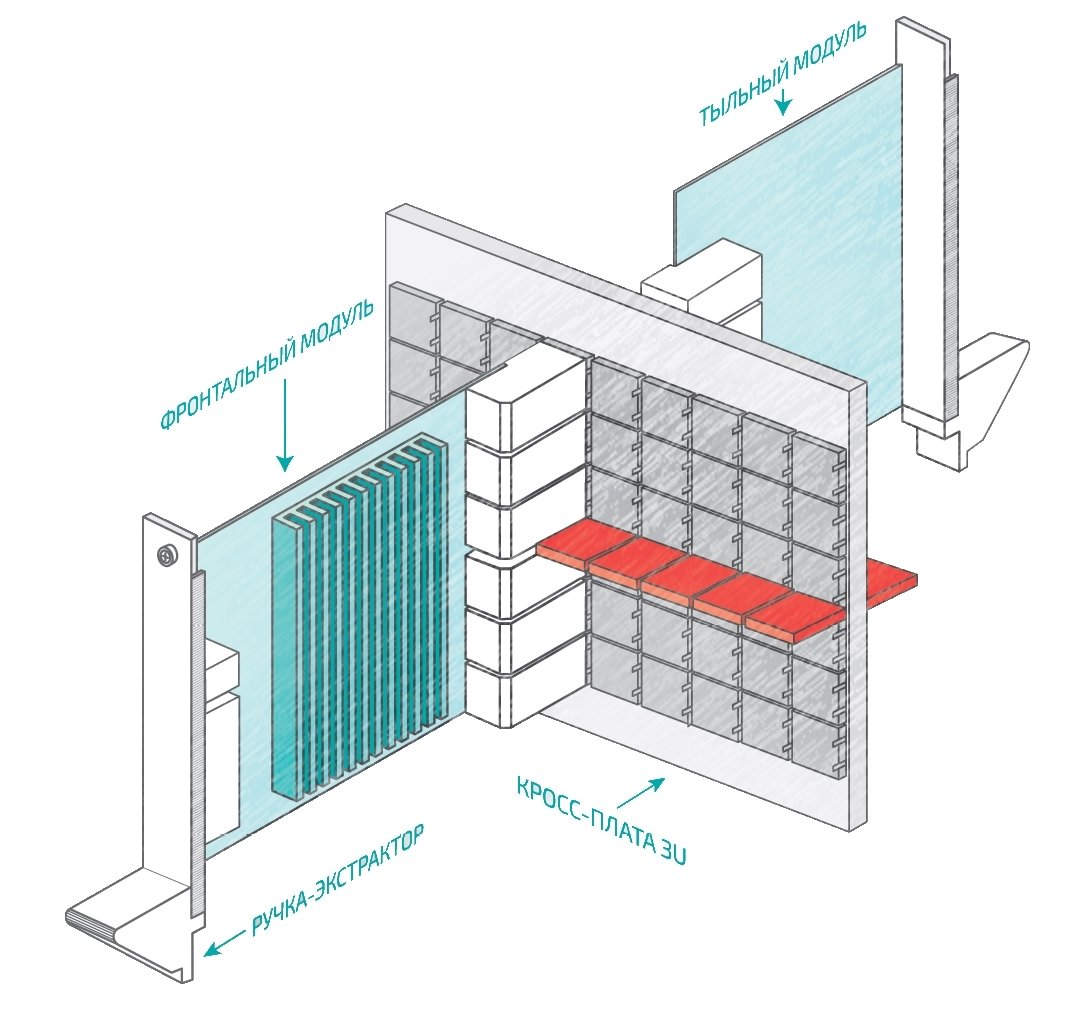
The principle of docking the modules of the standard CompactPCI
The systems are built in the construction of the Euromechanics 3U (рис.3), 6U
The main advantages of the CompactPCI standard:
Multiprocessor, heterogeneous computing systems;
– high resistance to shock and vibration;
– effective cooling;
– Support for hot-swap mode;
– backup support;
– application of standard chassis from different manufacturers.

Fig.3 Case with CompactPCI modules
A demonstrative example of the reliability of CompactPCI-compliant systems – Mars rover Opportunity, which is managed by two computers based on the CompactPCI standard [5].
On the red planet Opportunity rover was landed on January 24, 2004 and still continues to function.
The core of the control system is the RAD6000 single-board computer (manufactured by BAE Systems), made in the CompactPCI 6U version 2.0.
RAD6000 is a radiation-resistant single-board computer based on the RISC-processor, released by IBM. Later this division became a part of BAE Systems.
The computer has a maximum clock speed of 33 MHz and a speed of about 35 MIPS.
The board has 128 MB of RAM with ECC. Typically, the VxWorks RTOS runs on this computer. The processor frequency can be set to 2.5, 5, 10 or 20 MHz.
PC / 104
The PC / 104 form factor was adopted in 1992, in response to Requirements to reduce overall dimensions and power consumption for computer systems. Each of these goals was achieved without reducing hardware and software compatibility with popular computer standards. Specification PC104 offers full architectural, hardware and software compatibility with computer standards in a compact board size 3.6 “x3.8” (91.44 mm x 96.52 mm). The name of the standard was obtained due to the use of the 104-pin ISA bus located at the bottom of the board (Figure 4).
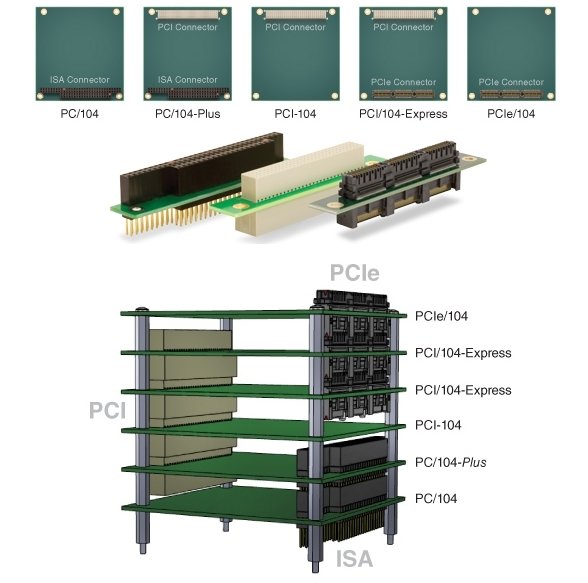
Fig.4 Stack of PC / 104 modules
PC / 104 standards describe the modular principle of building compact embedded systems in the form of a column of docked boards. Standards of the PC / 104 family have proven themselves among the developers of compact on-board computer systems. Many engineers choose PC / 104 because of the advantages that light weight and size of such devices give, mechanical reliability of both connectors and the whole construction.
The PC / 104 family of standards describes the exchange of data between modules over parallel ISA 16-bit, 32-bit PCI and PCI-Express, USB 2.0 and SATA serial interconnects and consists of 5 specifications. In addition to the most compact size of 90 × 96 mm, the standard family includes EPIC and EBX form factors.
One example of use is the use of PC / 104 modules to build equipment for the space experiment “Terminator”. Within the framework of the space experiment, observations were made in the visible and near infrared ranges of the spectrum of layered formations at the heights of the upper mesosphere-the lower thermosphere in the vicinity of the solar terminator “(Fig. 5).
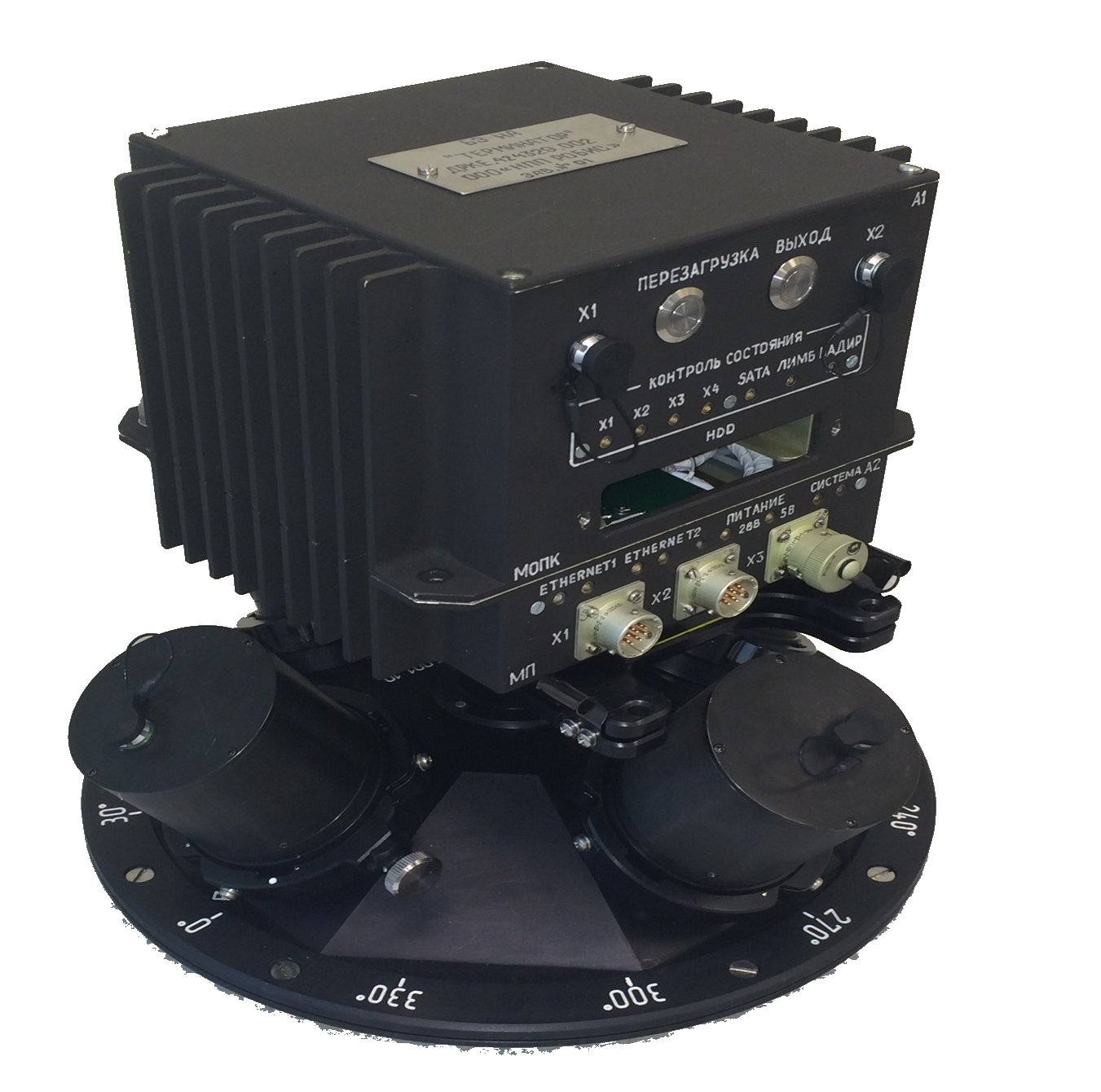
Fig. 5 – AT “Terminator”.
The core of the electronics block is the processor board of the format CPC1600 (Manufacturer Fastwel)
MicroPC
MicroPC – forms -factor of IBM PC-compatible (x86) industrial computers for harsh environments.
The size of MicroPC boards is 124 × 112 mm. Thanks to the original concept of developing products of the standard MicroPC are among the most resistant to the impact of tough external factors in the embedded computer market. MicroPC modules allow you to quickly build inexpensive, highly reliable embedded systems and automation systems from prefabricated “bricks” (Fig. 6).
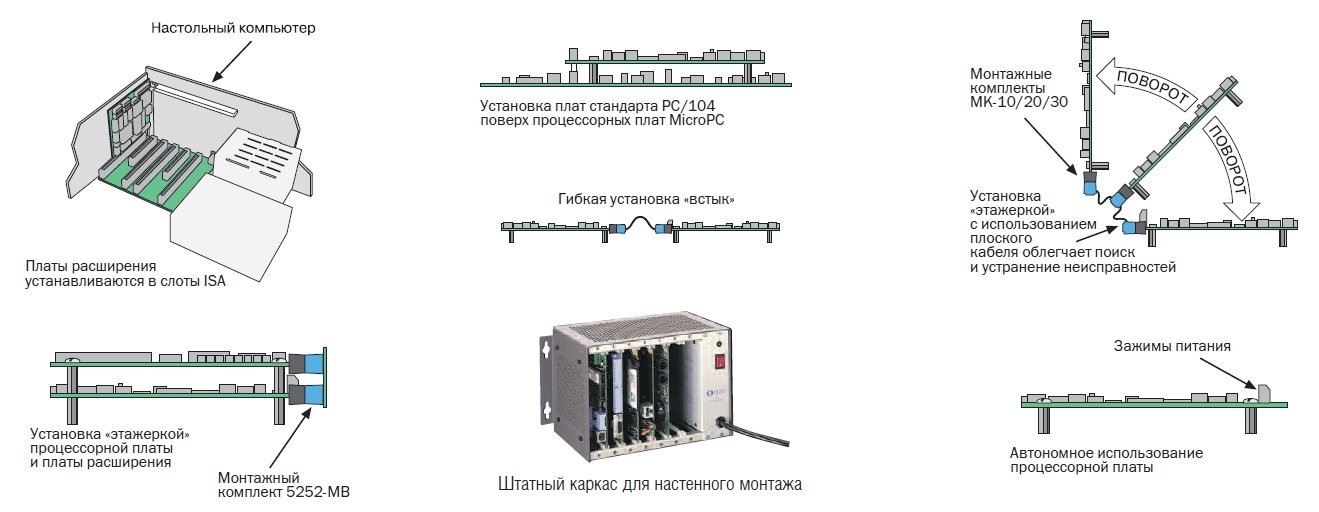
Fig.6 Chassis with MicroPC format modules
Design feature:
• passive motherboard (backplane or plume);
• 4-point mounting of expansion cards;
• It is possible to have additional discrete and analog I / O ports or the presence of PC / 104 expansion in the processor modules;
• watchdog timer;
• Extended temperature range: -40 to +85 ° C;
• low energy consumption and heat generation.
A bright example of the use of modules of the MicroSD format in space is the spacecraft “NEPTUNE-ME” console of the manned transport vehicle “SOYUZ TMA-M”
Crews to near-earth orbit is carried out by means of transport manned spacecraft of the Soyuz TMA-M series, which are a modification of the Soyuz TMA spacecraft. The ships install the consoles of a new generation of cosmonauts – Neptun-ME (Fig. 7), developed by NIIAO. The console is a three-processor computer system that includes two channels for displaying information on the basis of matrix liquid crystal indicators, means of exchange with the ship’s on-board systems, and controls for the on-board complex.
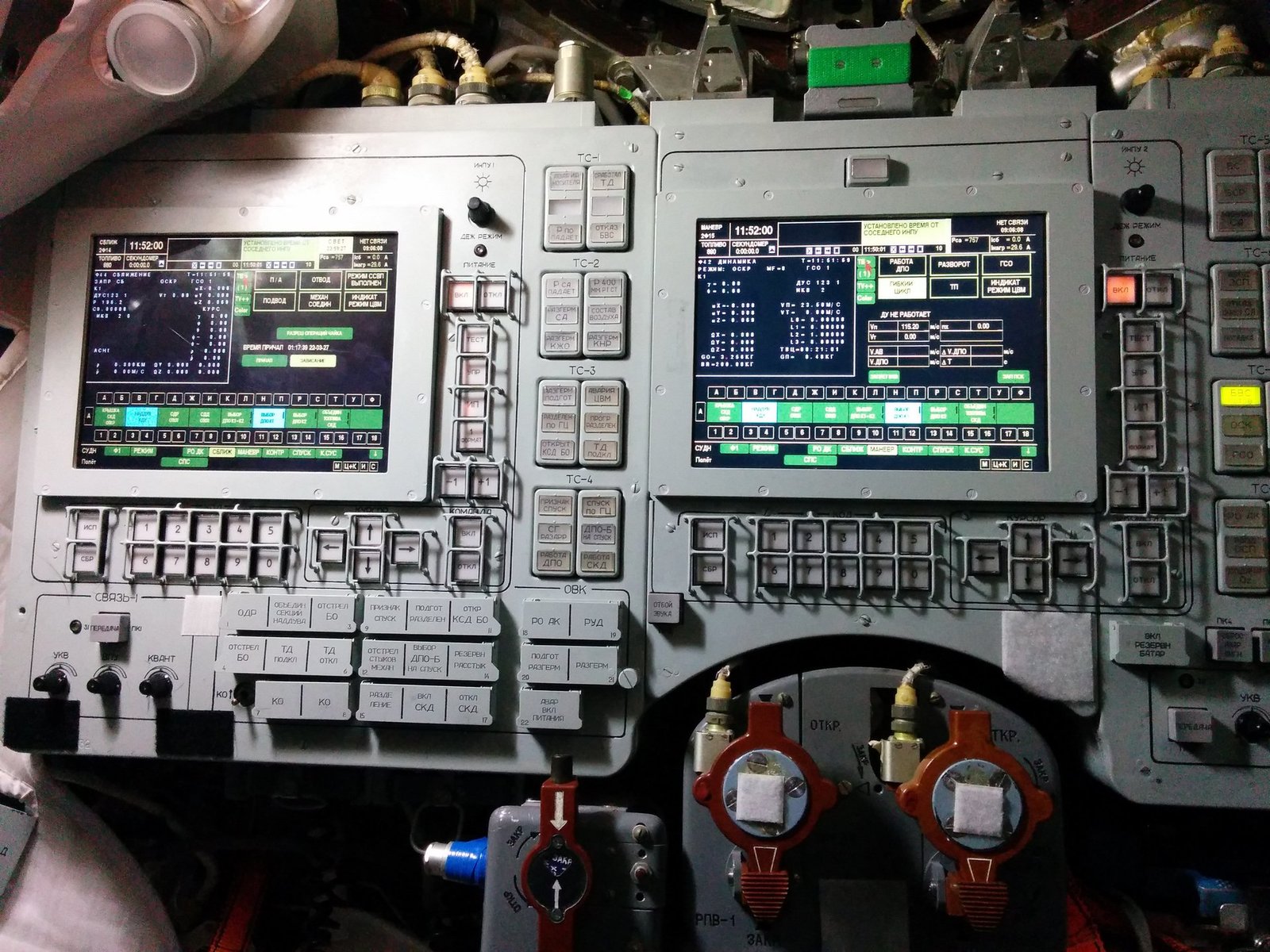
Fig.7 Remote Neptun-ME of the Soyuz TMA spacecraft.
The cosmonauts’ console Neptun-ME is designed for control and operational control of the crew members by the on-board systems of the spacecraft.
The technical means were developed and selected, taking into account the workability requirements under zero gravity and depressurization of the descent Apparatus, i.e. Taking into account the work of cosmonauts in the spacesuit.
Computing part is built using MicroPC modules.
Conclusion
Using COTS allows you to quickly develop a product in a highly competitive environment. As the examples showed, COTS is used not only in Western developer companies, but also in the Russian Federation.
COTS allow creating competitive computing systems. This technology is the guarantor of long-term success, ensuring the application of the latest global business trends and engineering achievements in the field of modern embedded computer technologies.
Literature
1. SpaceVPX – space reliability of the highway-modular systems, МКА: ВКС №2 / 2016
2. Microelectronics for space and military. Electronic resource
3. Watch out, kubsat! Electronic resource
4. When the kubbaths became large. Electronic resource
5. CompactPCI – the standard for building space computing equipment. STA No. 1/2017. 30-31.
6. The integrated SOI of the Soyuz-TMA spacecraft and the console of the manual control loop of the Russian segment of the ISS Alfa. Electronic resource.








